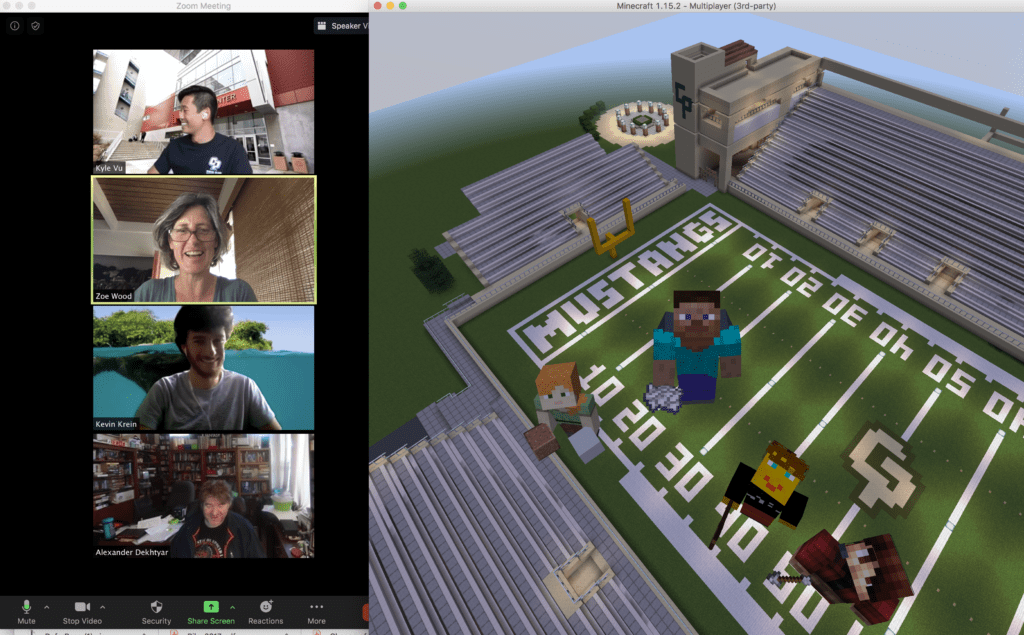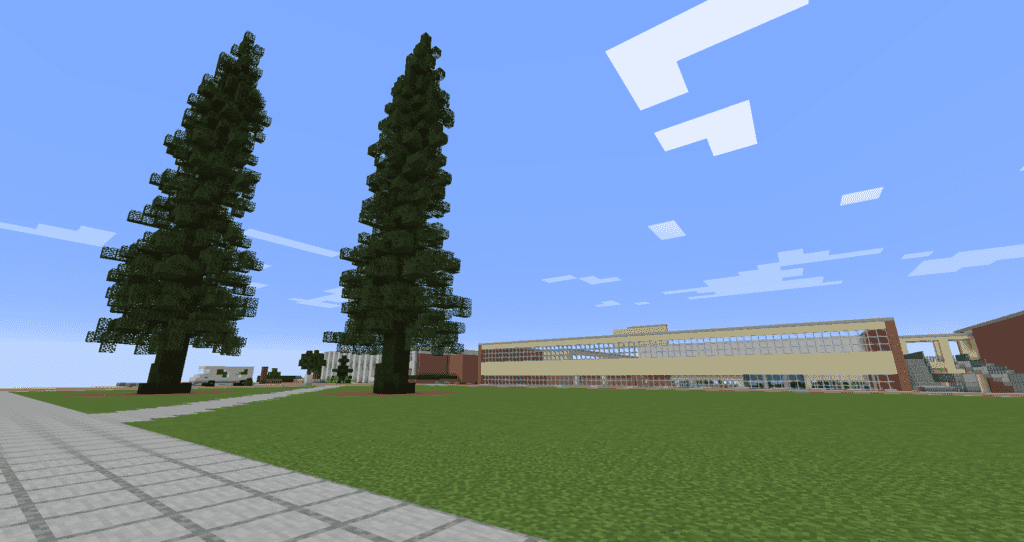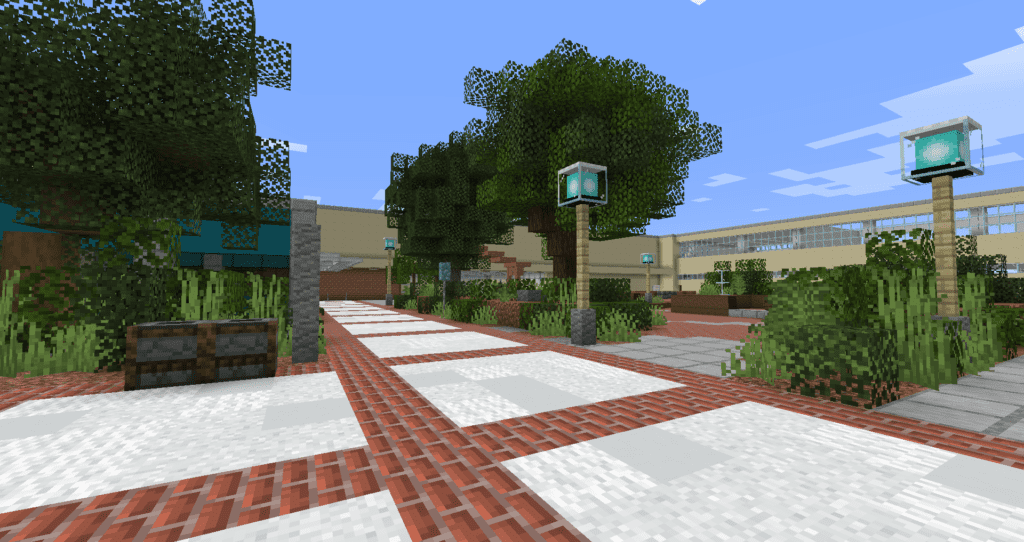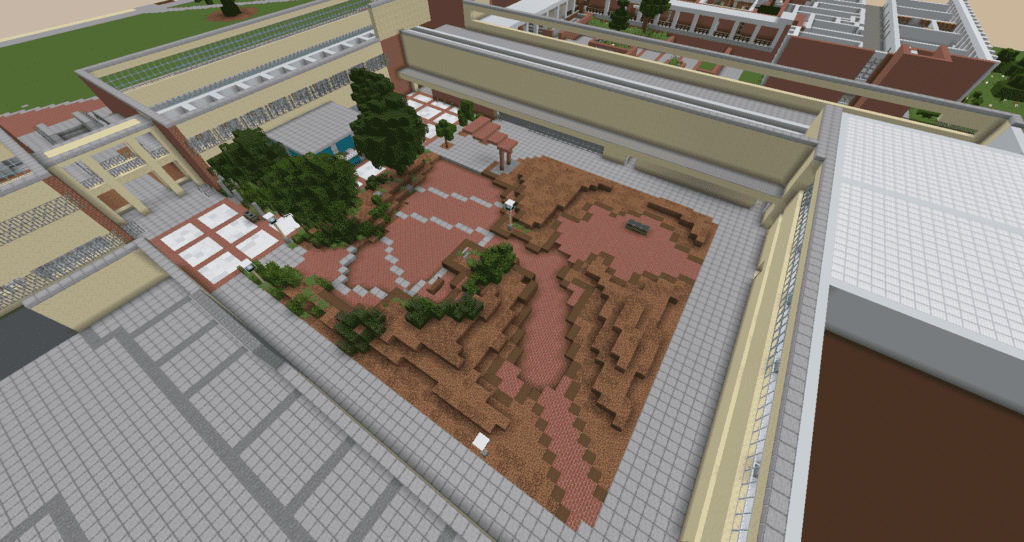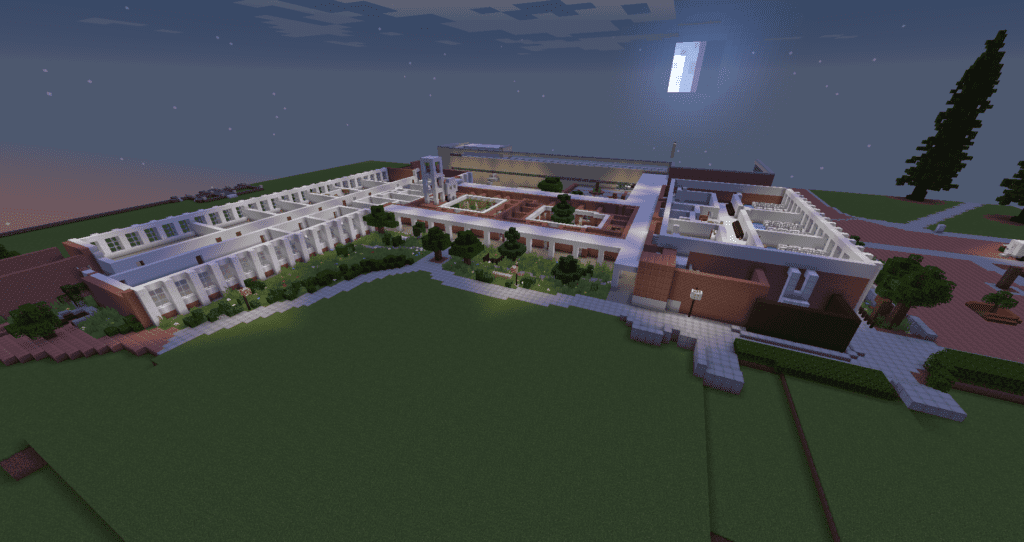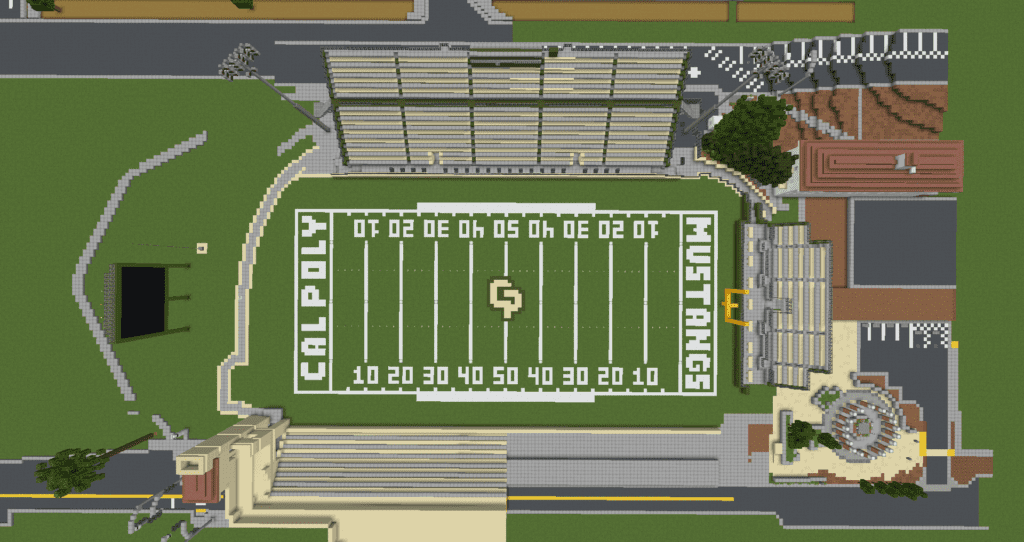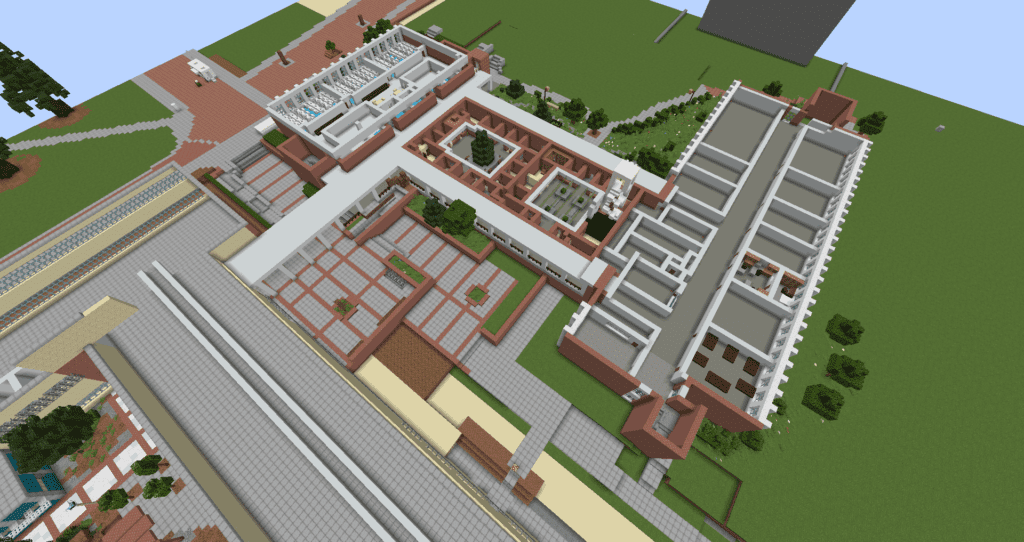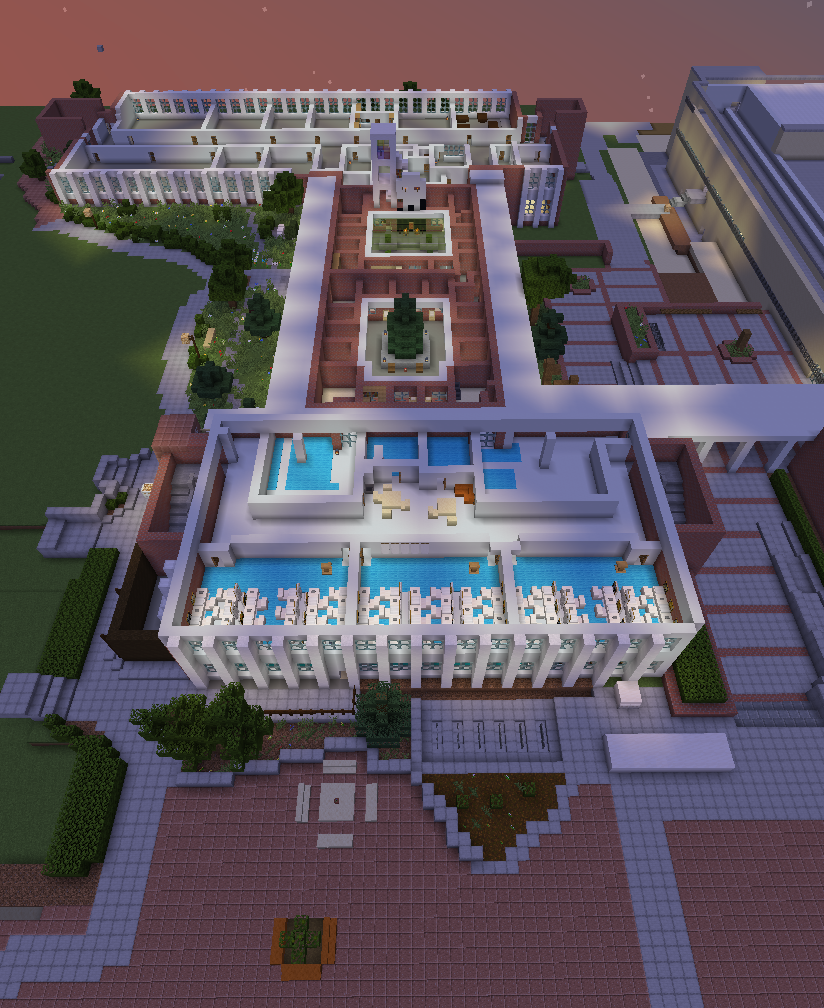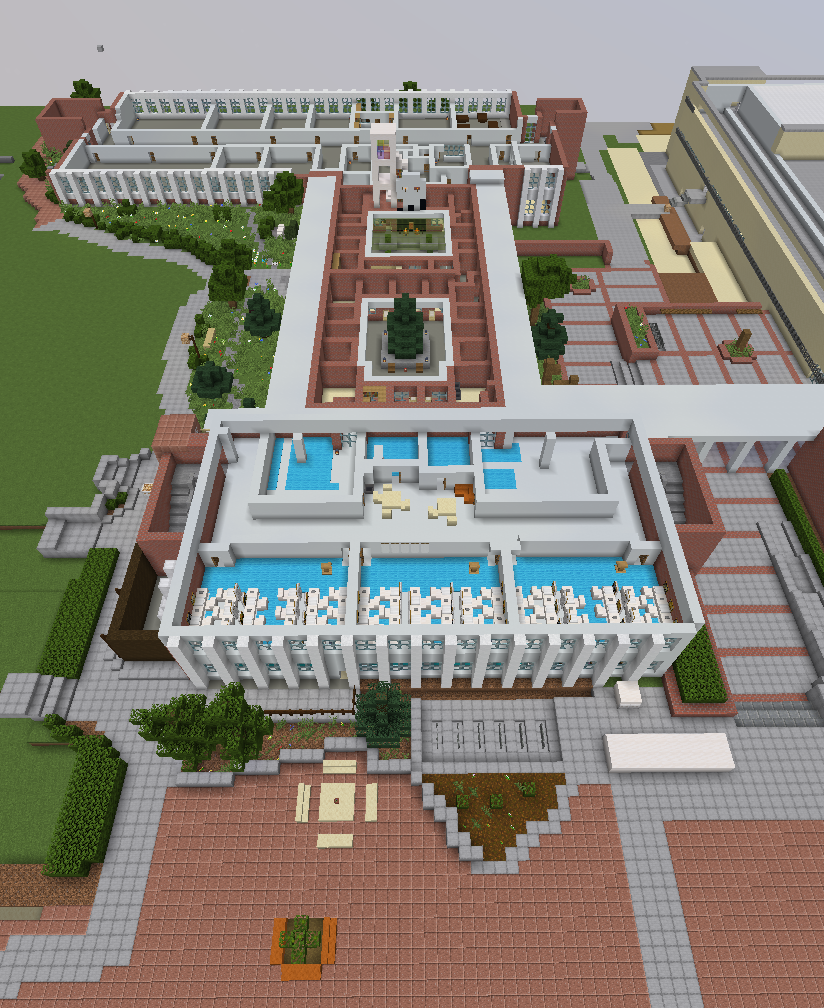Students and faculty are recreating the Cal Poly campus on Minecraft so the Computer Science and Software Engineering Department can hold a virtual graduation ceremony at Spanos Stadium this month.
“Because we can’t have an in-person graduation ceremony, we thought this could be a nice alternative,” said Kyle Vu, a CSSE senior, who has worked on the project in his free time.
This year’s on-campus graduation ceremonies have been canceled due to the COVID-19 virus, forcing departments to hold virtual ceremonies. Taking cues from other schools, including UC Santa Barbara and UC Berkeley, the CSSE Department launched a Cal Poly server on Minecraft and began creating a version of campus during spring break.
“My favorite part of this whole process so far has been seeing the professors enjoy themselves so much and hearing about the happiness and creative outlet that the server has given them so far,” said Kevin Krein, another student involved in the project.
Minecraft is a video game that allows players to create buildings, structures and whatever their imaginations conjure – essentially a virtual Lego game. To help create an accurate Minecraft Cal Poly, the students and faculty have used Google Earth (with measuring tools), Cal Poly building floor plans, images of campus and “fond memories and imaginations,” said Zoë Wood, a professor in the department.
On June 13, close to 100 graduating CSSE students and faculty will join the server at 1 p.m. and gather at the recreated Spanos Stadium.
“So we will all be together in the virtual world,” Wood said. “Well, at least all of our avatars will be together.”

Families of students will be able to view the event via live streaming. Simultaneously using Zoom, Department Chair Chris Lupo will present a brief welcome speech before faculty member John Clements reads the names of each graduate as they walk their avatars across the virtual stage. When all the students have “walked,” their avatars will fly around campus.
Wood said her favorite part about the project has been the collaboration between students and faculty.
“It truly is shared work and passion and comes from our desire to celebrate our amazing students,” she said.
Wood said around 20 people have worked on the project, which students and faculty from the Computer Engineering program will also use for graduation.
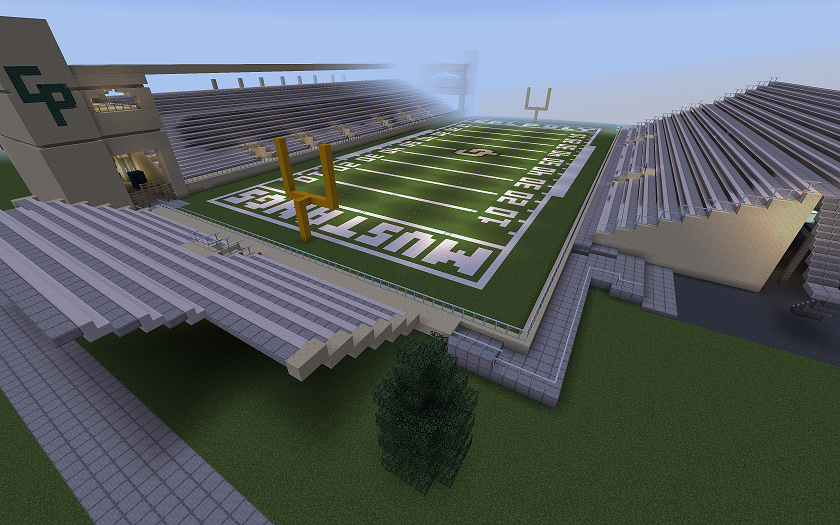
While Krein’s favorite part of the Minecraft campus is the detailed virtual stadium – the first element they created – Vu is especially fond of the Dexter Lawn area, though he said everything built so far will be impressive to look at.
“We’re trying to put in as much detail as possible so that it feels as if you’re actually on campus,” he said.
There have been some challenges, though. Getting correct scaling for Building 14, Krein said, took some time. And then there’s the natural environment that beautifies the campus.
“The hardest part has been the terrain,” Vu said. “Originally, we were going to keep the build flat, meaning no hills would be incorporated into campus, but we soon realized that in order to make the build as real as possible, terrain must be added.”
But it is a virtual campus, so the creators allowed themselves some artistic license.
“My office has an underground hidden retreat,” Wood said.
Meanwhile, Jane Lehr, a professor in Ethnic Studies and Women’s Gender & Queer Studies, was given an honorary office, complete with cats, and CSSE faculty member Zachary Peterson has a gothic-themed office with fire pits.
“Being able to both blend realistic virtual buildings with our creative interpretation has been a great source of pleasure,” Wood said.
Krein said he and Vu had dedicated at least 60 hours to the effort – with more work ahead. While their work will create a fun alternative, it doesn’t replace being able to say goodbye to friends and professors in person, Krein added.
“The handshakes and hugs and goodbyes unfortunately are something that cannot be easily replaced in Minecraft.”

